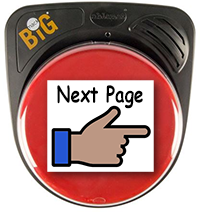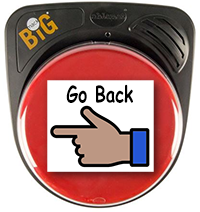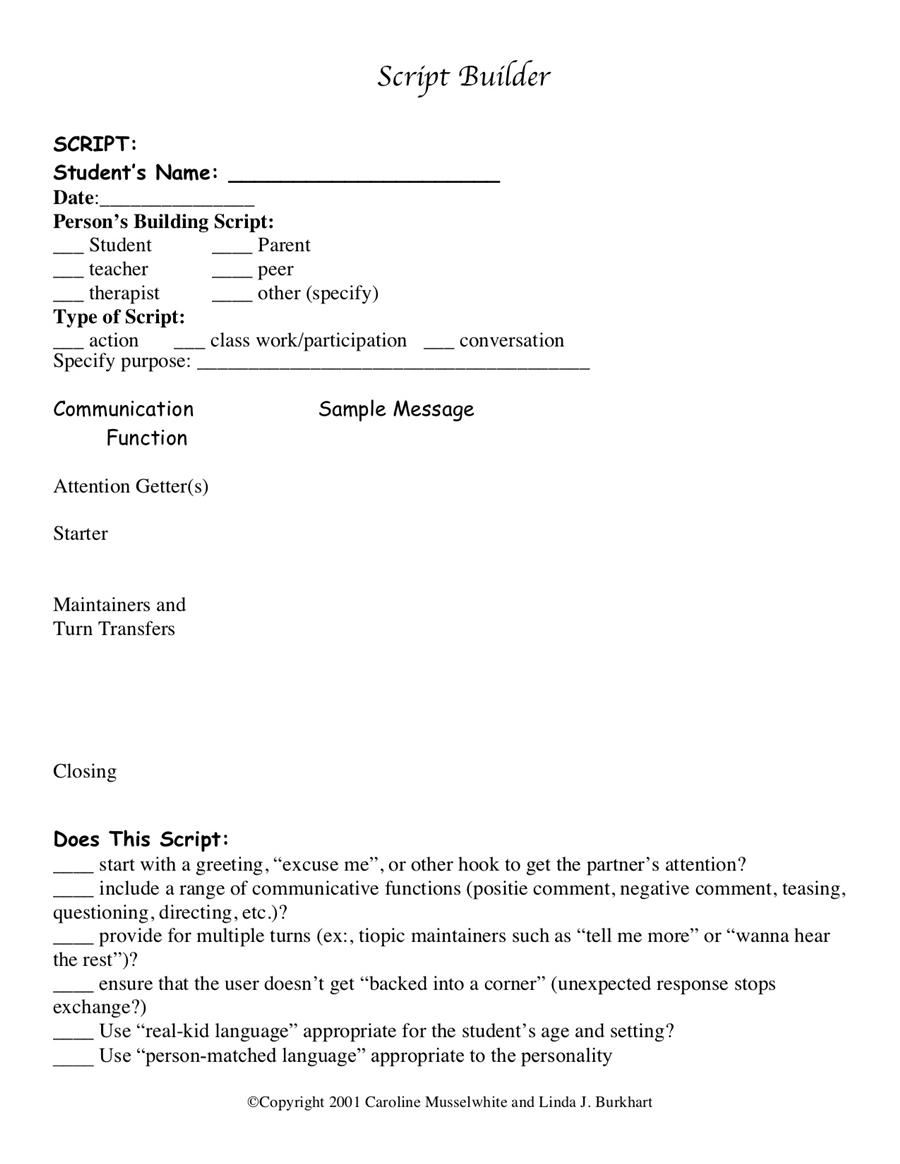-



TOPIC INDEX- Introduction
- Types of Talking Switches - Single Messages
- Types of Talking Switches - Sequenced Messages
- Creating and Using Social Scripts with Sequenced Talking Switches
- Using Talking Switches to Access Toys and Appliances for Fun and Motivating Communication
- Literacy Activities using Talking Switches
- Other Talking Switch Resources
Creating and Using Social Scripts with Sequenced Talking Switches Our children with complex communication needs can engage in authentic back-and-forth exchanges using social scripts! Social scripts are pre-written and pre-stored phrases and sentences that provide the language needed for a specific conversation or social exchange.
Our children with complex communication needs can engage in authentic back-and-forth exchanges using social scripts! Social scripts are pre-written and pre-stored phrases and sentences that provide the language needed for a specific conversation or social exchange.
Using sequenced message communicators such as the Step by Step with Levels, we can record social scripts that allow students to engage in genuine and motivating conversational interactions with peers and adults.
Social Scripts are especially powerful for students struggling with access, limited expressive language skills and emerging communication skills.
Co-Planned Sequenced Social Scripting was developed by Caroline Musselwhite and Linda Burkhart. It is a strategy that provides support for beginning students who use AAC to engage in and practice turn-taking and conversational exchanges. The framework of the scripts "allows for multiple reciprocal exchanges resulting in increased engagement with communication partners.”
By creating and recording social scripts, a young child can participate in simple, fun play routines such as "Simon Says" or peek-a-boo. Using a social script, an older student can tell peers something exciting that he did over the weekend - or tell a joke!
Here's a template of ideas to consider when constructing a social script to program on a talking switch or app. For a full description and examples of using a script builder, and more information about why social scripts are powerful read through the "Can We Chat" link below.

How to Co-Plan Social Scripts - Ideas for All Ages!- Can We Chat Co-Planned Sequenced Social Scripts (Dr. Caroline Musselwhite and Linda Burkhart)
- 101 Ways to Use a Step by Step from UNC
- Dr. Caroline Musselwhite Video - Writing Social Scripts for the Angelman Foundation
- How Sequenced Talking Switches can expand communication for AAC device users
Child using a sequenced switch to make a playful prank!
We've got to make communication fun!
Ready Made Social Scripts
You can record these directly onto your sequenced switch!Sample Social Scripts - older students
Social Game Scripts - Toddler and Preschool - link includes:
- Follow Me
- Simon Says
- Hiding Game
- Gonna Getcha/Playing tag




